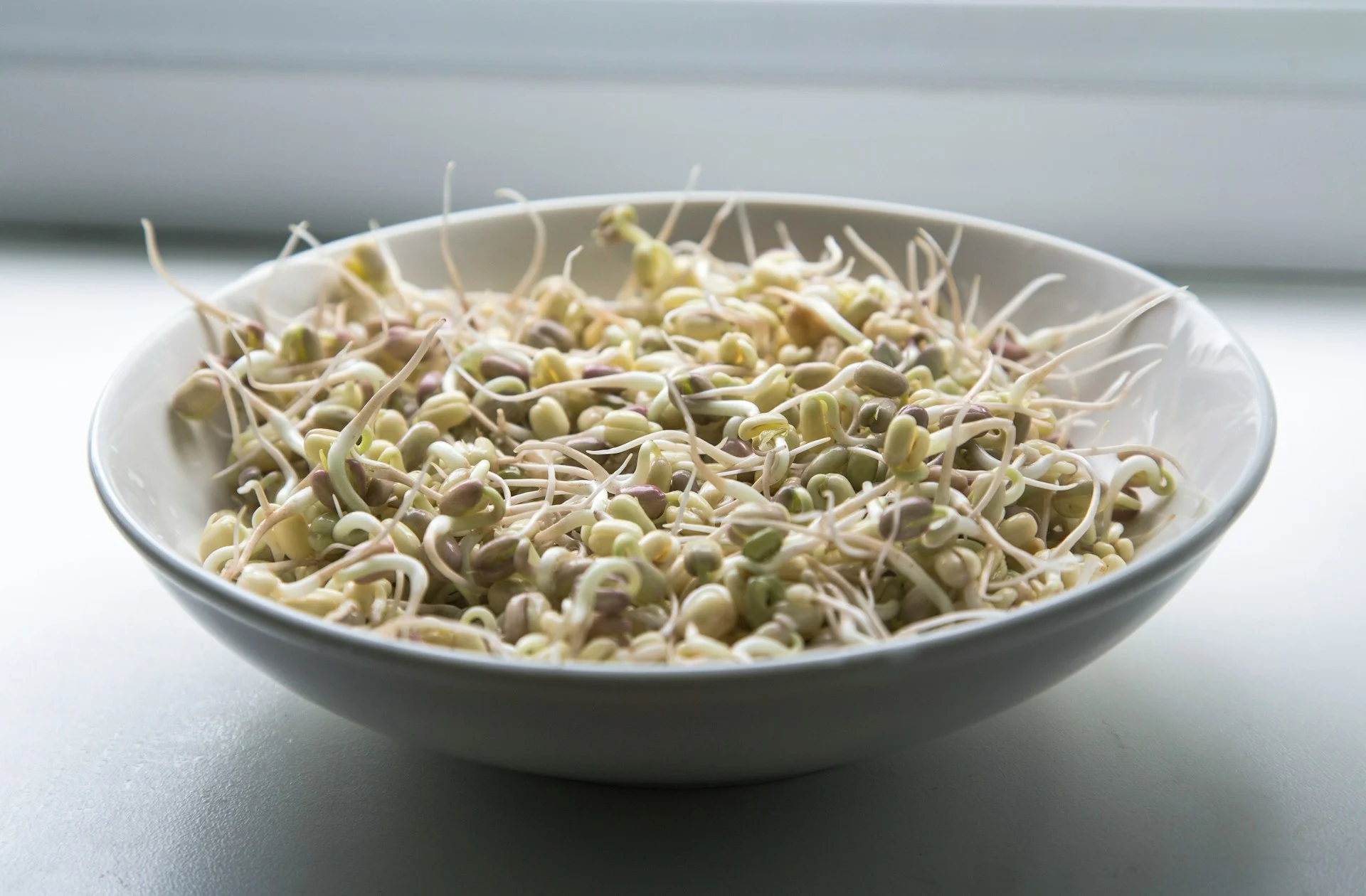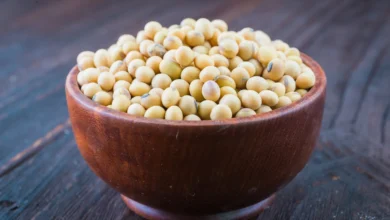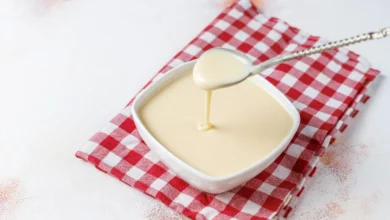Can You Freeze Bean Sprouts: A Complete Guide (+Tips)
Your last birthday bash was a smashing success, but now you’re left with a mountain of leftover bean sprouts. Toss them? No way! I discovered a trick that not only rescues these delicate shoots from the trash but also ensures I have a ready supply of crisp, flavorful sprouts for months to come. Yes, you can freeze bean sprouts, and I’ll share my simple, step-by-step method, honed from my own kitchen adventures.
Contents
- Can You Freeze Bean Sprouts
- What Are Bean Sprouts?
- Blanching the Bean Sprouts
- Placing the Sprouts in the Freezer
- Do Bean Sprouts Freeze Well?
- How Long Can You Freeze Bean Sprouts?
- How to Store Frozen Bean Sprouts Properly
- Benefits of Freezing Bean Sprouts
- Does Freezing Bean Sprouts Affect Their Texture?
- Can You Freeze Canned Bean Sprouts?
- Can You Freeze Bean Sprouts Without Blanching?
- How to Cook Frozen Bean Sprouts
- How Do You Defrost Bean Sprouts?
- Can You Refreeze Bean Sprouts?
- How To Know When Bean Sprouts Have Gone Bad In The Freezer
- When NOT to Freeze Bean Sprouts
- Culinary Creativity with Frozen Bean Sprouts
- Troubleshooting Tips for Frozen Bean Sprouts
- The Health Benefits of Bean Sprouts
- A Rainbow of Sprouts: Exploring Different Varieties
- Nutritional Value of Bean Sprouts (per 100g)
- Frequently Asked Questions
- Can you freeze bean sprouts once cooked?
- Does freezing bean sprouts affect their taste?
- How to know when bean sprouts are freezer-burned?
- Can You Freeze an Unopened Can of Bean Sprouts?
- Can You Freeze an Opened Can of Bean Sprouts?
- What is the best way to freeze beansprouts?
- How to preserve fresh bean sprouts?
- Can you freeze sprouts without blanching?
- Can you freeze bean sprouts after cooking them?
- Should you blanch bean sprouts before freezing?
- Can you freeze sprouted lentils?
- Can you freeze bean sprouts in a mason jar?
Can You Freeze Bean Sprouts
Can you freeze bean sprouts? Absolutely yes! Bean sprouts are ideally frozen for a period of 2 to 3 months. Although they can be kept frozen for longer, sprouts frozen for extended durations beyond this typical range may have reduced quality.
While these tender shoots are a delicious addition to stir-fries, soups, and salads, their short shelf life often leaves home cooks wondering how to preserve their crisp texture and flavor. Freezing them is a surprisingly simple and effective solution. The key is to blanch the bean sprouts first to ensure they retain their best qualities for up to a year in the freezer. Whether you’ve got a bumper crop from your garden or simply want to use every last sprout from the store, freezing them can be a game-changer.
What Are Bean Sprouts?
Bean sprouts are young, tender shoots that emerge from germinated beans or other legume seeds. These edible sprouts are used in various cuisines around the world, prized for their crisp texture and mild flavor. Mung beans are the most popular choice for sprouting, resulting in the familiar mung bean sprouts commonly found in your local grocery store.
Beyond their culinary appeal, bean sprouts are also surprisingly nutritious. Packed with vitamins, minerals, and enzymes, they offer a significant nutritional boost to salads, stir-fries, and even sandwiches. Their fresh, crunchy quality lends a delightful contrast to many dishes, making them a valued ingredient for their flavor and health benefits.
READ: Can You Freeze Risotto
Blanching the Bean Sprouts
1. Rinse and Refresh
Wash the bean sprouts thoroughly under cool running water. It’s important to rinse any produce, and bean sprouts are no exception. Washing them will remove any dirt or bacteria that may be clinging to them. Handle the sprouts lightly with your fingers as they are delicate and can be damaged easily. If you have a few minutes, you can place the bean sprouts in a colander and submerge them in a sink full of cool water. This will help loosen any remaining dirt, which will fall to the bottom and drain away when you lift the colander and rinse the sprouts under the tap. Lightly pat the bean sprouts dry using paper towels to avoid them becoming soggy before freezing.
2. The Perfect Boil
Bring a large pot of water to a boil on the stove over high heat. The pot should be big enough that the water doesn’t boil over when you add the bean sprouts. A shallow pan or stock pot is a good choice for blanching. Fill it about 2/3 of the way full. Make sure the water reaches a rolling boil, where the entire surface of the water is bubbling rapidly, and the boiling doesn’t stop even if you stir it.
3. Chill Out
Prepare an ice bath by filling a large bowl with ice and water. Having the ice bath ready ahead of time is important to prevent the bean sprouts from overcooking once they are blanched. If you don’t have ice, very cold water will also work, but make sure it’s cold enough to immediately stop the cooking process. This ice water not only cools the bean sprouts quickly but also helps preserve their crispness when frozen. If you’re blanching a large number of batches, the heat from the sprouts will gradually melt the ice, so you may need to replenish it.
4. Blanching in Batches
Drop a handful of sprouts into the boiling water and let them blanch for exactly 3 minutes. If you’re working with a large pot, you can add a few more sprouts, but avoid adding too many, as this can cause them to cook unevenly, resulting in a less desirable finished product that is harder to control. If you have a lot of bean sprouts, it’s best to blanch them in several batches. While each batch will take a few minutes, it’s worth the extra time to ensure they are cooked properly.
5. From Boil to Chill
After 3 minutes, carefully remove the bean sprouts from the boiling water using a slotted spoon. Quickly transfer them to the ice bath. Don’t leave the bean sprouts in the hot water for longer than 3 minutes, or they will become mushy once frozen.
6. The Big Chill
Transfer the sprouts to the ice bath immediately after removing them from the boiling water. Plunge them into the ice water and allow them to sit for about 30 seconds, until they are completely cool. This method instantly stops the cooking process, ensuring the bean sprouts stay tender and crunchy. If you’re preparing another batch, you can add a handful of raw sprouts to the boiling water while the first batch is chilling in the ice bath. This technique works well for a wide variety of vegetables, but it’s especially effective for delicate veggies like bean sprouts.
7. Dry and Prep
Once the bean sprouts are chilled, lay them out on paper towels to dry. Using the slotted spoon, remove them from the ice water and spread them out in a single layer on a stack of paper towels. Make sure the sprouts are completely dry before freezing them to prevent them from developing freezer burn.
Placing the Sprouts in the Freezer
1. Single Layer Spread
Lay the blanched and dried bean sprouts in a single layer on a baking sheet. Make sure they are spread out evenly, avoiding them laying on top of each other. This will help them freeze properly. You can also lay a sheet of wax paper on top of the baking sheet before adding the bean sprouts. This will prevent them from sticking to the tray. It’s essential that the sprouts are completely dry before you place them on the baking sheet. If they are still wet, they will stick together and freeze into a solid clump. Pre-freezing them on a tray will ensure that they freeze separately.
2. Flash Freeze
Place the tray in the freezer for 10 minutes, or until the bean sprouts are completely frozen. The sheet should begin to harden within a few minutes. Check the sprouts regularly to see if they are ready. If they still feel soft to the touch, leave them in the freezer for a bit longer. Check them every 5 minutes until they reach the desired texture.
3. Portion and Package
Once frozen, remove the tray and package the sprouts in airtight containers. Estimate how many bean sprouts you typically use per meal or portion, and divide them accordingly. You can use plastic containers with tight-fitting lids or place them in freezer bags. If you’re using resealable plastic bags, press out as much excess air as possible before sealing them. Bean sprouts tend to expand slightly as they finish freezing, so leave about 1⁄2 inch (1.3 cm) of headspace in each bag or container.
4. Final Freeze
Place the containers in the freezer immediately. You want to prevent the bean sprouts from beginning to thaw, as this can affect their quality. Frozen bean sprouts are delicate and should be placed in an area of the freezer where they are not likely to be disturbed or crushed. Label each container with the contents and date so you can easily remember how long they’ve been in the freezer. Frozen bean sprouts can stay good for 10-12 months. But it is recommended to use your frozen bean sprouts within 2 to 3 months.
5. Thawing Time
Thaw the bean sprouts in the refrigerator when you’re ready to use them. They will defrost gently if you place the bag or container in the fridge overnight. Avoid using a microwave or other methods to thaw them quickly, as this can cause them to become soft and mushy. It may take a few hours to defrost bean sprouts in the refrigerator, so plan ahead if you’re planning to cook with them. If you’re adding them to a hot dish, such as a soup or stir-fry, you don’t need to thaw them first.
READ: Fresh Oregano Pesto
Do Bean Sprouts Freeze Well?
Bean sprouts, especially mung bean sprouts and other fresh varieties, freeze remarkably well, especially when compared to canned ones. While their texture may change slightly after freezing and thawing, this is a reliable method to preserve their flavor and nutritional benefits. With proper blanching, drying, and packaging techniques, you can maintain the quality of your bean sprouts throughout storage, allowing you to enjoy them in your favorite dishes long after their initial harvest or purchase.
How Long Can You Freeze Bean Sprouts?
The ideal freezing duration for bean sprouts typically ranges from 2 to 3 months. While they may remain frozen for longer periods, my experience has shown that their quality starts to diminish after this timeframe. You may notice changes in their texture and taste, which can impact their overall appeal in dishes.
To ensure the best results, it’s recommended to use frozen bean sprouts within this 2-3 month timeframe. Proper packaging, labeling, and following the recommended freezing guidelines can help maintain their freshness and maximize their usability in your favorite recipes.
How to Store Frozen Bean Sprouts Properly
To ensure your frozen bean sprouts stay in tip-top shape, follow these simple storage tips:
- Invest in quality containers: Use airtight freezer-safe containers or thick, resealable freezer bags to prevent freezer burn and maintain freshness.
- Label and date: Clearly label each container with the contents and the date of freezing. This will help you keep track of their lifespan and ensure you use them within the recommended timeframe.
- Organize your freezer: Dedicate a specific area or bin in your freezer for storing frozen bean sprouts. This makes it easier to find them and prevents them from getting lost or crushed beneath other items.
- Avoid strong odors: Keep bean sprouts away from strong-smelling foods like fish or onions, as they can absorb these odors over time.
- Freeze flat: If using freezer bags, lay them flat to maximize space and allow for faster thawing when needed.
- Don’t refreeze: Once thawed, avoid refreezing bean sprouts, as this can negatively impact their texture and flavor.
Benefits of Freezing Bean Sprouts
Freezing bean sprouts is a convenient way to extend their shelf life, keeping them good for up to a year. It also makes them incredibly easy to incorporate into stir-fries and other recipes, saving you time and effort in the kitchen. By freezing bean sprouts, you can avoid unnecessary food waste and ensure you always have a supply of these crisp, nutritious vegetables on hand whenever you need them.
Additionally, freezing helps preserve the crunchy texture of bean sprouts, allowing you to enjoy their fresh flavor and delightful snap even months after they’ve been harvested or purchased. This simple preservation method unlocks a world of culinary possibilities, making bean sprouts a versatile ingredient that can be enjoyed year-round.
Does Freezing Bean Sprouts Affect Their Texture?
Bean sprouts can be a bit temperamental when it comes to freezing, so it’s important to use the right food storage containers to prevent them from becoming mushy.
Can You Freeze Canned Bean Sprouts?
Canned bean sprouts can be frozen, but their texture may change significantly upon thawing due to their pre-cooked nature. Start by draining them thoroughly and patting them dry. Then, follow the same packaging and freezing steps mentioned above for fresh bean sprouts.
Can You Freeze Bean Sprouts Without Blanching?
Freezing bean sprouts without blanching them is possible, but it’s important to note that blanching helps maintain their texture and color during freezing. Without blanching, the bean sprouts may become slightly softer and lose some of their crunchiness after freezing and thawing.
Procedure: If you prefer not to blanch, thoroughly rinse and dry the bean sprouts before placing them in airtight containers or freezer bags. Ensure that you remove as much air as possible to prevent freezer burn. While not recommended for optimal results, this method is a viable option if you need to save time and effort.
How to Cook Frozen Bean Sprouts
Cooking with frozen bean sprouts is a breeze, and it’s a fantastic way to add a burst of freshness and crunch to your meals. There’s no need to thaw them beforehand; simply grab the desired amount from your freezer and incorporate them directly into your cooking.
Here are a few ways to use frozen bean sprouts:
- Stir-fries: Toss them into the pan during the last few minutes of cooking to retain their crispness.
- Soups: Add them towards the end of simmering to prevent them from becoming mushy.
- Salads: Thaw them slightly in the refrigerator for a refreshing addition to your salads.
- Spring rolls or dumplings: Use them as a filling, adding a delightful crunch to every bite.
- Noodles or rice dishes: Sprinkle them on top for a fresh, vibrant garnish.
Remember: Frozen bean sprouts are already blanched, so they only need a quick warm-up. Overcooking them can result in a loss of texture and flavor.
READ: How to Know if Kale is Bad
How Do You Defrost Bean Sprouts?
Defrosting bean sprouts is a simple process that helps retain their quality. To thaw frozen bean sprouts, transfer the desired amount from the freezer container or resealable plastic bag to the refrigerator. Allow them to thaw slowly for several hours or overnight. This gradual thawing prevents moisture loss and helps maintain their texture.
Once thawed, gently pat them dry with a paper towel before using them in your recipes. Avoid using warm water or heat to defrost them, as this can compromise their crunchiness and taste.
Can You Refreeze Bean Sprouts?
It is generally not recommended to refreeze bean sprouts once they have been thawed. The freeze-thaw cycle can significantly impact their texture and flavor, potentially leading to a loss of quality. Once thawed, it’s best to plan to use or consume them promptly rather than attempting to refreeze them.
This approach minimizes the risk of diminishing their taste and crunchiness, and it’s a helpful tip to prevent food waste. Thaw only the amount you need for a single cooking session to ensure you’re enjoying them at their best.
How To Know When Bean Sprouts Have Gone Bad In The Freezer
Sometimes, unfortunately, foods can go bad in the freezer. If your food goes badin the freezer and you eat it, it could cause you to become very sick. One way to tell if food has gone bad in the freezer is if the food has developed any sort of odor. If your food has grown any sort of mold, it has also gone bad.
It’s unusual for foods to go bad in the freezer, as the cold temperatures typically prevent spoilage. However, if you suspect that your bean sprouts have gone bad in the freezer, thoroughly check the other foods in your freezer to ensure that nothing else has gone bad, either.
When NOT to Freeze Bean Sprouts
While freezing bean sprouts offers numerous advantages, there are a few instances where it’s best to avoid it. If your bean sprouts are already slimy, discolored, or have an off odor, they’re past their prime and freezing won’t improve their quality. Additionally, if you have a small amount of bean sprouts that you can easily use within a few days, it may not be worth the effort to freeze them. Lastly, if you don’t have proper storage containers or freezer space, it’s better to consume the sprouts fresh to avoid compromising their taste and texture.
Culinary Creativity with Frozen Bean Sprouts
Frozen bean sprouts are more versatile than you might think! While they’re a natural fit for stir-fries and soups, their unique texture and nutritional profile open up a world of culinary possibilities:
- Nutrient-Packed Smoothies: Blend a handful of frozen bean sprouts into your morning smoothie for a boost of vitamins, minerals, and enzymes. Their mild flavor won’t overpower your favorite fruits and veggies, while their fiber content adds a satisfying thickness.
- Hearty Veggie Burgers: Mix chopped frozen bean sprouts into your homemade veggie burger patties for added texture and nutrients. Their slight crunchiness adds a delightful contrast to the softer ingredients, creating a more interesting and satisfying bite.
- Egg Dishes: Stir frozen bean sprouts into scrambled eggs or frittatas for a quick and easy protein-packed breakfast or lunch. Their neutral flavor blends well with various seasonings and other vegetables.
- Fried Rice: Skip the takeout and whip up your own healthier version of fried rice at home. Frozen bean sprouts can be added directly to the pan during the final minutes of cooking, adding a fresh, vibrant element to the dish.
- Lettuce Wraps: For a light and refreshing appetizer or snack, wrap cooked chicken, tofu, or shrimp along with frozen bean sprouts and your favorite veggies in lettuce leaves.
- Spring Rolls: Add thawed and well-drained bean sprouts to your spring roll fillings for a satisfying crunch.
Troubleshooting Tips for Frozen Bean Sprouts
Even with careful preparation, you might encounter a couple of hiccups with your frozen bean sprouts. Here’s how to tackle them:
- Freezer Burn: If your sprouts develop a frosty, white coating (freezer burn), it’s usually a sign of air exposure. While still safe to eat, freezer burn can affect the texture and flavor. To prevent it, ensure your containers or bags are airtight, squeezing out excess air before sealing. If you notice minor freezer burn, simply trim the affected areas before cooking.
- Mushy Sprouts: If your bean sprouts turn out overly soft after thawing, it might be due to insufficient drying before freezing, thawing them too quickly, or overcooking them after thawing. Make sure to pat them thoroughly dry before freezing, thaw them slowly in the refrigerator, and only cook them briefly when adding them to dishes.
The Health Benefits of Bean Sprouts
Don’t let their small size fool you – bean sprouts pack a nutritional punch! These tiny sprouts are low in calories yet brimming with essential vitamins and minerals. They’re a good source of vitamin C, which is crucial for immune function, as well as various B vitamins that support energy metabolism and nervous system health.
Bean sprouts also provide a decent amount of fiber, aiding in digestion and promoting satiety. Additionally, they contain minerals like iron, magnesium, and potassium, which play vital roles in oxygen transport, muscle function, and fluid balance.
The potential health benefits of bean sprouts extend beyond their impressive nutrient profile. Some research suggests that they may possess antioxidant properties, helping to protect cells from damage caused by harmful free radicals. While more studies are needed to confirm these effects, incorporating bean sprouts into your diet can be a tasty and nutritious way to support your overall well-being.
A Rainbow of Sprouts: Exploring Different Varieties
While mung bean sprouts are the most common variety, a world of other bean sprouts awaits your culinary exploration. Each type offers unique flavors and textures, adding diversity to your dishes.
1. Mung Bean Sprouts
These delicate sprouts are known for their mild flavor and crisp texture, making them a versatile addition to stir-fries, salads, and sandwiches. They freeze well, retaining their quality for months when properly blanched and stored.
2. Soybean Sprouts
Slightly larger and more robust than mung bean sprouts, soybean sprouts have a nuttier flavor and a heartier texture. They can be used in similar ways as mung bean sprouts but may require a bit longer cooking time.
3. Adzuki Bean Sprouts
These vibrant red sprouts have a sweet and slightly nutty taste. They’re often used in salads and as a garnish for various dishes. While they can be frozen, their delicate nature may cause them to become slightly softer upon thawing.
4. Alfalfa Sprouts
These small, delicate sprouts have a slightly grassy flavor and a tender texture. They’re a popular addition to sandwiches and salads, adding a fresh and nutritious element. Due to their delicate nature, they may not freeze as well as other varieties.
Remember: Regardless of the variety, it’s essential to blanch bean sprouts before freezing to preserve their best qualities. Experiment with different types to discover your favorites and add a unique twist to your culinary creations.
Nutritional Value of Bean Sprouts (per 100g)
| Nutrient | Amount |
| Calories | 31 |
| Protein | 3.2 g |
| Carbohydrates | 6.7 g |
| Fiber | 1.6 g |
| Sugars | 4.3 g |
| Fat | 0.2 g |
| Vitamin C | 13.7 mg |
| Vitamin K | 13.4 mcg |
| Folate | 80 mcg |
| Potassium | 155 mg |
| Magnesium | 21.8 mg |
| Iron | 0.95 mg |
Conclusion
So, there you have it! Freezing bean sprouts is a simple and effective way to reduce food waste, save money, and always have this versatile ingredient on hand. Whether you’re a seasoned stir-fry enthusiast or a salad aficionado, mastering this technique opens up a world of culinary possibilities. Embrace the convenience of frozen bean sprouts and elevate your dishes with their fresh crunch and vibrant flavors year-round.
__________________________
Frequently Asked Questions
Can you freeze bean sprouts once cooked?
While it’s possible to freeze cooked bean sprouts, it’s not recommended. The freezing and thawing process can significantly alter their texture, making them mushy and less appealing. It’s best to cook bean sprouts just before serving to enjoy their optimal flavor and crispness. However, if you do choose to freeze cooked bean sprouts, it’s important to use them as soon as possible upon thawing and to be aware of the potential change in texture.
Does freezing bean sprouts affect their taste?
Freezing bean sprouts can slightly affect their taste, primarily due to changes in texture caused by the freezing and thawing process. While they may lose a portion of their characteristic crunchiness, freezing generally preserves their overall flavor profile. They may become slightly softer after thawing.
How to know when bean sprouts are freezer-burned?
Freezer burn in bean sprouts is characterized by changes in appearance, texture, and taste. Visually, they may appear frosty, discolored, or dried out. They will also be noticeably tougher and less crunchy. Additionally, theymay exhibit a slightly off or stale taste compared to their fresh state.
Can You Freeze an Unopened Can of Bean Sprouts?
It is not recommended to freeze an unopened can of bean sprouts. Canned foods can expand when frozen, potentially causing the can to burst or become damaged. Additionally, the texture and quality of the bean sprouts can be compromised by freezing and thawing.
Can You Freeze an Opened Can of Bean Sprouts?
Freezing an opened can of bean sprouts is not recommended. The contents have been exposed to air and moisture, which can affect their quality during freezing. The liquid in the can may also expand, potentially leading to integrity issues and changes in the texture of the sprouts upon thawing. It is advisable to consume opened can of bean sprouts within a reasonable time frame to enjoy their optimal taste and texture rather than attempting to freeze them.
What is the best way to freeze beansprouts?
Put the mung beans in a colander and boil them for about three minutes. Once boiled, immediately place them in an ice bath. Let the bean sprouts sit in the bath for another three minutes. Remove the sprouts from the water and drain any excess moisture. Put the bean sprouts in a bag, then put them in the freezer.
How to preserve fresh bean sprouts?
The USDA recommends keeping sprouts at a 32-degree Fahrenheit temperature (0 °C). This method of sprout storage keeps them fresh for a few days. Submerge the shoots in a container of ice water and place them in the fridge if you need them fresh for longer. Replace the ice water daily to ensure freshness.
Can you freeze sprouts without blanching?
You can freeze uncooked Brussels sprouts, but you need to be aware that they will be a little softer than blanched ones. Keep an eye on your cooking time, and plus they won’t keep in the freezer for long. Try to cook them straight from frozen, don’t defrost first.
Can you freeze bean sprouts after cooking them?
While freezing cooked bean sprouts is possible, it’s not recommended as their texture will likely become mushy and unappetizing upon thawing. Cooked bean sprouts are best enjoyed fresh or within a few days of cooking.
Should you blanch bean sprouts before freezing?
Blanching bean sprouts before freezing is highly recommended. This process helps preserve their texture, color, and flavor during storage. While freezing without blanching is possible, the sprouts may become softer and less appealing after thawing.
Can you freeze sprouted lentils?
Yes, you can freeze sprouted lentils following the same blanching, drying, and freezing steps outlined for bean sprouts. However, keep in mind that their texture may change slightly after thawing.
Can you freeze bean sprouts in a mason jar?
While it’s possible to freeze bean sprouts in a mason jar, it’s not recommended due to the risk of breakage. Glass jars can crack or shatter when exposed to freezing temperatures. It’s best to use freezer-safe containers or bags instead.





